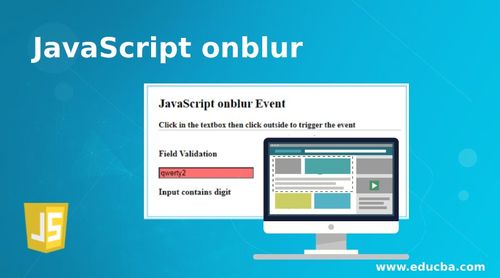In the realm of web development, ensuring data accuracy is paramount, especially when it comes to user-provided email addresses. JavaScript's onBlur event offers a powerful way to validate email addresses instantly, providing users with real-time feedback. In this comprehensive guide, I, an expert in JavaScript, will take you on a journey through email validation using the onBlur event. By the end of this guide, you'll have mastered the art of enhancing user experience and data accuracy with JavaScript.
The Significance of Email Validation
Before diving into the technical aspects of using onBlur for email validation, let's understand why email validation is crucial for web applications:
1. Data Accuracy
Email validation ensures that the data collected through forms and applications is accurate and reliable.
2. User Experience
Real-time validation using onBlur provides immediate feedback to users, enhancing their experience and reducing frustration.
3. Security
Validating email addresses is a fundamental step in protecting your application from potential vulnerabilities and misuse.
4. Cost Efficiency
Accurate email data reduces the cost associated with failed communication attempts, such as bounced emails.
Email Validation with JavaScript's onBlur Event
JavaScript's onBlur event is a game-changer when it comes to email validation. It allows you to validate email addresses as users interact with your forms, providing instant feedback. Let's explore how to implement onBlur email validation:
1. HTML Form Setup
Begin by setting up your HTML form with an input field for email:
<form id="myForm">
<label for="email">Email:</label>
<input type="email" id="email" name="email" onblur="validateEmail()">
</form>
Here, we've added the onblur attribute to the email input field, specifying that the validateEmail() function should be called when the field loses focus.
2. JavaScript Validation Function
Now, create the JavaScript function to validate the email address:
function validateEmail() {
const emailInput = document.getElementById('email');
const emailValue = emailInput.value;
const emailRegex = /^[A-Za-z0-9._%+-]+@[A-Za-z0-9.-]+\.[A-Za-z]{2,}$/;
if (!emailRegex.test(emailValue)) {
// Invalid email address
emailInput.classList.add('invalid');
} else {
// Valid email address
emailInput.classList.remove('invalid');
}
}
In this function, we use a regex pattern to validate the email address. If the email is invalid, we add a CSS class to highlight the input field, providing visual feedback to the user.
3. CSS for Styling
To enhance user experience, you can apply CSS styles to highlight the input field when an invalid email is detected:
.invalid {
border: 2px solid red;
}
This CSS rule adds a red border to the input field, indicating an invalid email address.
4. Enhancements and Customizations
You can further enhance your onBlur email validation by customizing error messages, implementing server-side validation, and integrating feedback mechanisms for users.
Advanced Email Validation Techniques
To take your onBlur email validation to the next level, consider these advanced techniques:
1. Server-Side Validation
While onBlur validation offers real-time feedback, it's essential to implement server-side validation as well to ensure data integrity.
2. Custom Error Messages
Provide informative error messages that guide users in correcting their email addresses.
3. Feedback Mechanisms
Integrate tooltips or pop-up messages to explain why an email address is invalid, helping users understand and correct their input.
4. Accessibility
Ensure that your onBlur validation is accessible to all users, including those with disabilities, by following accessibility best practices.
Common Questions about onBlur Email Validation
As an expert in email validation using JavaScript's onBlur event, I'm well-acquainted with the common questions that users often have. Here are answers to those queries:
1. Is onBlur Email Validation Secure?
OnBlur validation is a valuable tool for enhancing user experience, but it should always be complemented with server-side validation to ensure security.
2. Can I Customize the Error Messages for Invalid Emails?
Yes, you can customize error messages to provide clear and helpful guidance to users.
3. What Happens If JavaScript Is Disabled?
If JavaScript is disabled, onBlur validation won't work. In such cases, server-side validation becomes even more critical.
4. Is onBlur Validation Supported by All Browsers?
Yes, onBlur is a standard event supported by all major browsers, making it a reliable choice for email validation.
5. Are There JavaScript Libraries for Email Validation?
Yes, there are JavaScript libraries like "validator.js" that provide email validation functionality and can be integrated with onBlur events.
In conclusion, email validation using JavaScript's onBlur event is a powerful tool for enhancing user experience and ensuring data accuracy.



